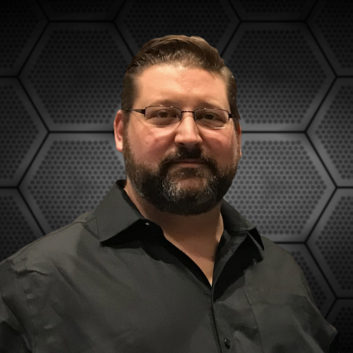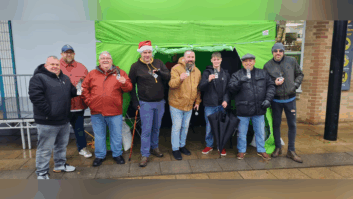The author of this commentary is VP of operations at DJB Radio Software Inc. This commentary is excerpted from the Radio World ebook “Trends in Automation.”
Virtualization. Cloud. Untethered Radio.
A couple of years ago I was invited to give a chat at my local AES chapter about remote broadcasts. As a lifelong radio guy I have stories aplenty (as most of us do), and the AES folk were fascinated by my tales of “guerilla engineering.”
On this particular occasion I gave a humorous history of radio remotes starting from the days of literally bringing the radio station to the remote site via a cargo van (or horse-drawn carriage) to today’s more rational events. These might include a small mixer, a couple of mics and a laptop or two, but are still firmly rooted at a table and plugged into a wall.
I then got all “what if” and I started talking about the radio remote of the future. I envisioned the radio host as a one-man band, going from place to place in a shopping mall with nothing more than a tablet strapped to their arm and a headset mic (Bluetooth, of course) on his or her head. I raved like a lunatic about cloud-based this and virtualized that with AES67 to deliver audio and AES70 managing control protocols. No wires or other obsolete shackles to hold our fearless host back — no broken folding table and threadbare chairs — just untethered freedom!
Little did I know my seemingly far-fetched Roddenberry-esque model would start coming to life in short order but it would also become a model for brick-and-mortar radio stations — not just remotes.
Virtualization is here. Cloud is here. The question is — how do we make it work?
LITTLE C, BIG C

In 2018 I took on my current position with my lifelong friend Ron Paley at his second automation venture, DJB Radio Software. Among the challenges presented was to come up with a cloud model for the newly minted DJB Zone radio automation platform.
No problem! We’ll go get some space at AWS, spin up a cloud server and off we go. Right? Well … partly.
If all we want to do is run an automation system in the cloud, DJB Zone, or any of the popular automation platforms, can accomplish the task by simply using the cloud to house data or to run the software virtually on a cloud-based server. An HTML interface or third-party remote access software can get you to the dance, so to speak, and virtual sound drivers can send audio back to your studio or direct to your transmitter site. Let’s call that model “Little C” cloud.
Expectations are high among the decision makers in the industry that we can further rationalize operations by employing this wonderfully cost-effective place called “the cloud” to replace expensive brick and mortar studios. We’ll call that model “Big C” cloud and it is a complex beast.
SHOWING BACKBONE
If what we need is something that resembles the traditional radio model of mics and phones and multiple audio sources and codecs with a host (or hosts) in multiple locations all contributing to one broadcast without so much as a single physical fader, we’ve got quite the hill to climb. Getting automation in and out of the cloud is one thing, but what about the backbone?
First and foremost, there’s the issue of reliable internet connections — even the most robust fiber pipe suffers from downtime. Next, we have to tackle multipoint latency not only in audio but in LIO controls. And then there’s the issue of a virtualized, cloud-based mixing console that can handle inputs from all over the place and sync all of this disparate audio.
“It works for the streaming services — why not for traditional radio?” asks the most vocal member of the peanut gallery.
For starters, radio has a very different business model — it is not an on-demand service, nor is it entirely “canned” content. It also has a fickle audience — for generations now, radio listeners have been trained to be impatient. With that in mind, I generally respond to our vocal friend with the following — if it takes a few extra seconds for Apple or Spotify or Pandora to buffer, the average listener happily sits there watching the little wheel or hourglass go around. If a radio station disappears for a few seconds, that same listener will hit seek and move on to the next available frequency that IS playing something.
Live. Local. Immediate. The three hallmarks of radio since the dawn of the golden age. Lose those and we may just lose radio as we know it. This is the challenge facing not only the software companies but the hardware manufacturers too.
“Little C” cloud-based automation is a reality — there are some rough corners to smooth out yet, but we’re getting there. It’s the challenges of “Big C” that must be overcome before we can truly virtualize and “untether” radio. In the meantime, we can happily enjoy the many benefits of virtualizing radio automation systems in a central TOC or a cloud platform, saving money and increasing synergies among markets. Let’s invest those reclaimed resources in coming up with a new model for radio that will see it into its second century.
Adam Robinson is a 25-year radio veteran who has worked on both sides of the mic. An early adopter of radio automation and AoIP systems, he is now VP operations for DJB Radio Software. Contact him at [email protected].







